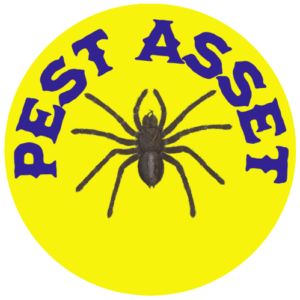The box tree moth (Cydalima perspectalis) has become a dreaded pest in recent years, wreaking havoc on boxwood (Buxus) gardens worldwide. Originating from East Asia, this invasive species has rapidly spread across Europe and North America, leaving devastation in its wake. In this comprehensive guide, we will delve into the box tree moth’s characteristics, lifecycle, and the most effective pest control strategies to eliminate this garden menace. Learn how to safeguard your boxwood plants and restore your garden’s beauty.
Understanding the Box Tree Moth
The box tree moth, also known as the box moth or boxwood moth, is a small but highly destructive insect. Recognizing its key features and understanding its lifecycle is crucial to combatting this pest effectively.
Identification
The adult box tree moth has a wingspan of approximately 4 cm, with a distinct pattern of white and brown markings. Its larvae, commonly referred to as caterpillars, are lime green with black heads and reach up to 4 cm in length. Identifying these distinctive features will help you spot the presence of box tree moths in your garden.
Lifecycle
Understanding the lifecycle of the box tree moth is vital for implementing effective pest control measures. These moths undergo a complete metamorphosis, passing through four main stages: egg, caterpillar, pupa, and adult. By knowing when and where each stage occurs, you can disrupt their life cycle and prevent further infestations.
Signs of Infestation
Early detection of a box tree moth infestation is crucial to prevent significant damage to your boxwood plants. By recognizing the telltale signs, you can take immediate action and protect your garden.
Defoliation
One of the primary signs of a box tree moth infestation is defoliation, where the caterpillars voraciously feed on boxwood leaves. Keep a close eye on your plants and take prompt action if you notice extensive leaf damage or skeletonization.
Silken Webbing
Box tree moth caterpillars create distinctive silken webbing structures around the affected plants. These webs serve as shelters and protect the larvae during their feeding phase. If you observe such webbing on your boxwood, it is a clear indication of an infestation.
Effective Control Measures
Combating the box tree moth requires a multi-faceted approach that combines proactive prevention, early detection, and targeted pest control methods. Here are some strategies to eradicate these invasive pests and protect your boxwood garden.
Cultural Control Methods
Promote plant health and resilience by maintaining proper garden hygiene. Regularly inspect your boxwood plants, removing any caterpillars, pupae, or webs by hand. Pruning infected branches and disposing of them safely can also help reduce the infestation.
Biological Control
Introducing natural predators, such as specific parasitic wasps (e.g., Ooencyrtus kuvanae), can effectively control the box tree moth population. These beneficial insects target the moth’s eggs, larvae, and pupae, helping to keep their numbers in check.
Chemical Control
In severe infestations, chemical control may be necessary. Consult with a pest control professional to identify appropriate insecticides specifically designed for box tree moths. Always follow the instructions carefully and consider environmentally friendly options to minimize harm to beneficial insects and the environment.
Preventative Measures
for Future Protection Preventing a box tree moth infestation is key to preserving the health and beauty of your boxwood garden. By implementing these preventive measures, you can reduce the risk of future invasions.
Quarantine and Inspection
When purchasing new boxwood plants, ensure they come from reputable sources and have undergone thorough inspection. Quarantine newly acquired plants before introducing them to your existing garden to prevent any potential infestation.
Plant Diversity
Encourage a diverse garden by incorporating a variety of plant species. This helps minimize the risk of an entire garden being devastated by a single pest, as box tree moths tend to target boxwood exclusively.
Monitoring and Early Intervention
Regularly monitor your garden for signs of box tree moth activity. By catching an infestation early, you can take immediate action to prevent further damage and minimize the need for extensive pest control measures.
Conclusion:
The box tree moth poses a significant threat to boxwood gardens, but with the right knowledge and proactive measures, you can effectively combat this invasive species. By understanding the box tree moth’s lifecycle, identifying signs of infestation, and implementing integrated pest management strategies, you can protect your beloved boxwood plants and restore the beauty of your garden. Stay vigilant, take action, and enjoy a thriving boxwood garden for years to come.


